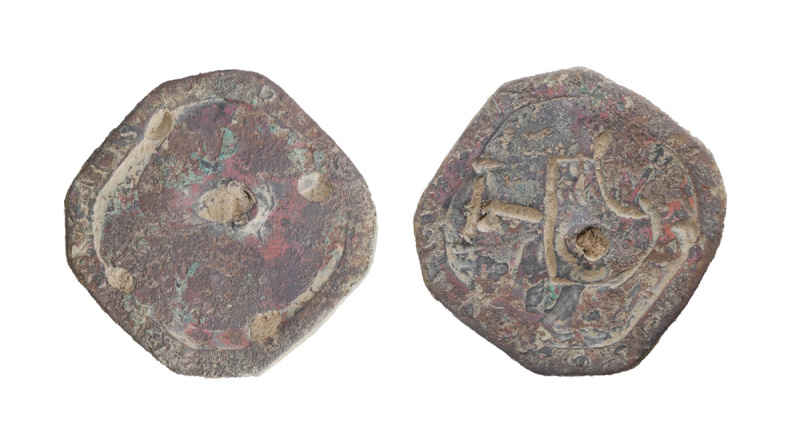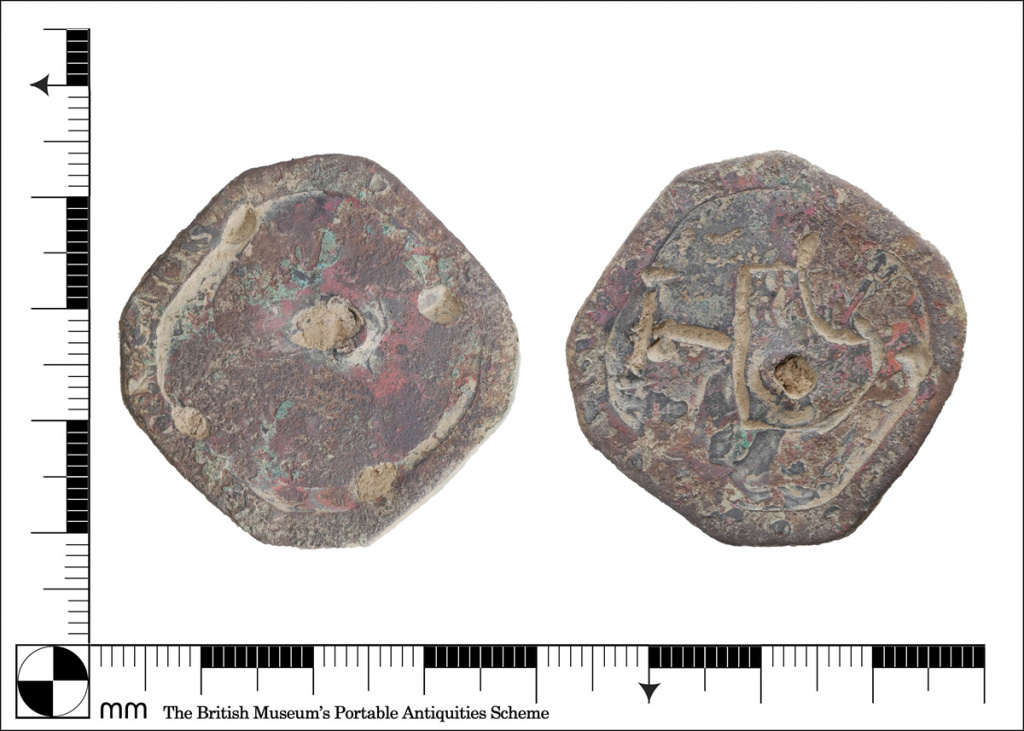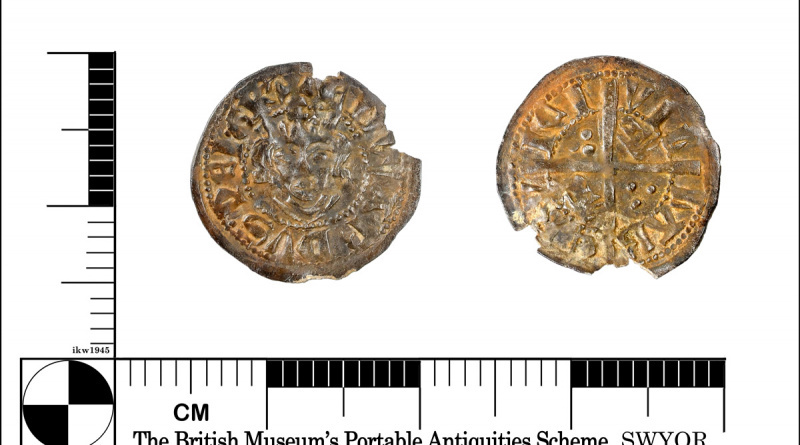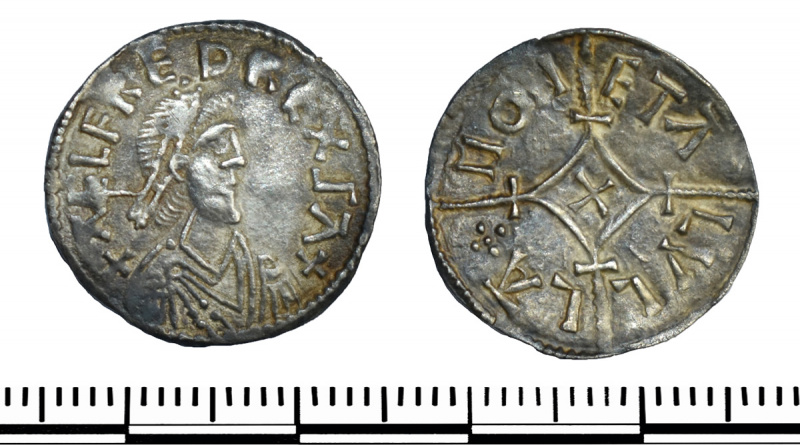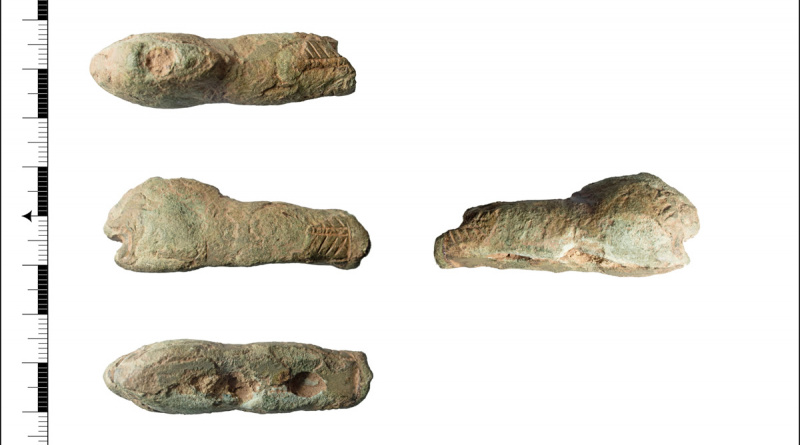PAS Finds (w/e 31/03/23) – Cartwheel Penny
PAS Finds (w/e 31/03/23) – Cartwheel Penny
My selection of the detecting finds recorded at the PAS in the week ended 31 March 2023.
Featured Find
Modified Cartwheel Penny
The distinctive collar gives a clue that this is a “Cartwheel” penny of George III. The remains of the legend reads GEORGIUS, which would confirm the identification. It has been heavily modified, possibly into a gaming piece.
The Cartwheel penny is a significant coin in British history and not just because of its size and weight. It’s the story of how a far sighted businessmen, Matthew Boulton, harnessed the power of new invention to improve the manufacture of coins.
Matthew Boulton
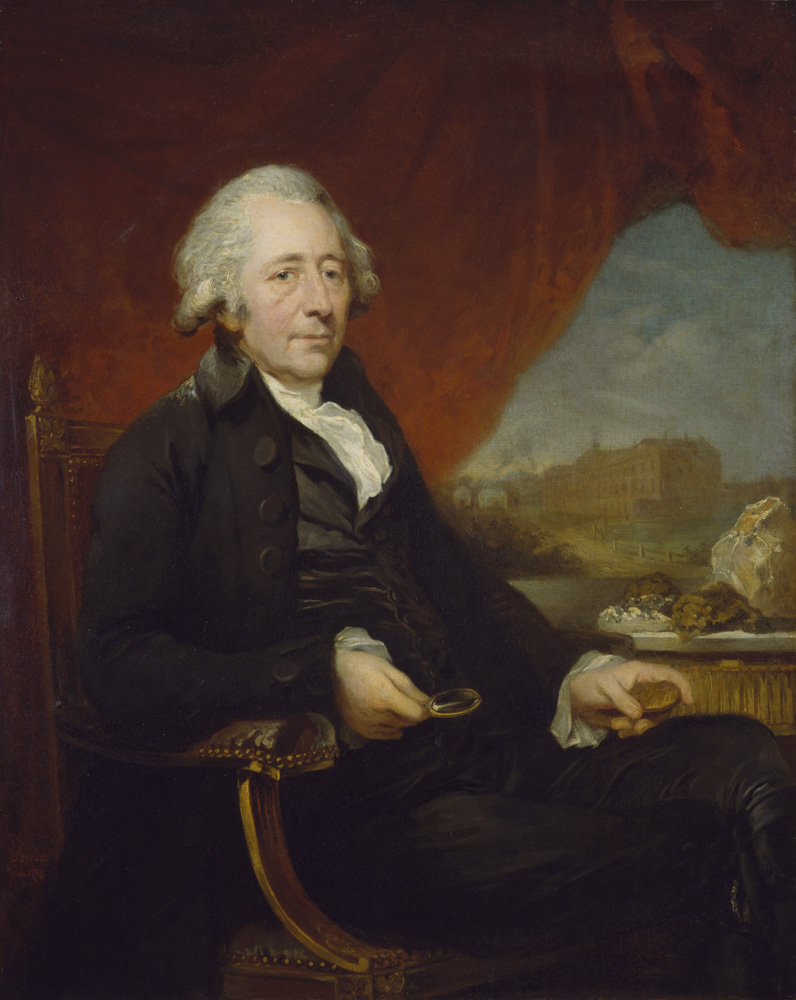
Matthew Boulton was born in 1728 in Birmingham. Through inheritance and marriage he had the finances to pursue his entrepreneurial flair; at 17 he invented a method to enamel buckles, which he exported to France and then reimported to Britain as the latest French fashion.
Boulton’s factory in Soho, Birmingham was used to manufacture various items including buttons, silver plate pieces and Ormolu, a type of gold plating.
All this required a lot of power and Boulton became aware of a Scotsman who was working on an improvement to the Newcomen steam engine. His name was James Watt.
Partnership with Watt
In 1769, Watt patented an engine with a separate condenser, which made it far more efficient than the Newcomen. However, he turned to other things and did little with it. When Watt’s partner fell into financial problems, Boulton took his two-thirds share of Watt’s patent in settlement of £1,200 owed to him. To make it a success, Boulton needed to do two things: extend the patent beyond its 14 year life and persuade Watt to develop the engine. He did just that; persuading parliament to extend the patent to 1800 and Watt to come to work in Birmingham.
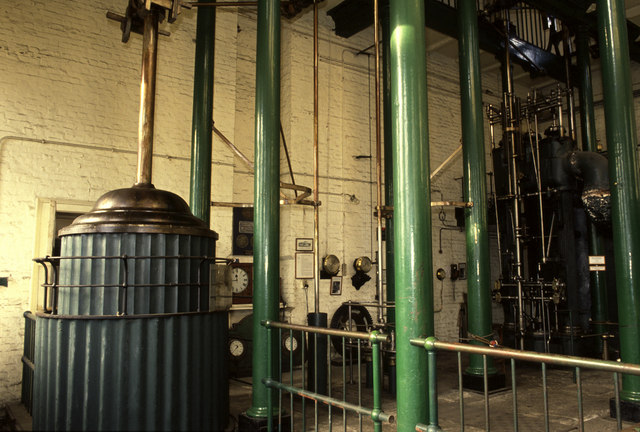
The first commercial engines were produced in 1776. These were used to pump water from mines, which made Cornwall a major market. As that market became saturated, Boulton turned to other industries. In 1782 Watt modified the engine so that it had a rotary motion, which could be used in mills.
Coinage
At this time, the estimates of of how much of the coins in circulation in Britain were counterfeit ranged from “a lot” to “nearly all”. As the Royal Mint struck no copper coins for 48 years from 1773, merchants filled this gap by producing their own copper tokens. Boulton was well placed to serve this market as he had shares in several Cornish copper mines, a large stock of copper of his own and now the necessary machinery. He struck millions of these tokens.
In 1786, he began minting coins for the East India Company but it wasn’t until 1797, after years of trying, that he managed to persuade the British government to mint some copper coinage.
The Carthweel Coinage of 1797
On 3 March 1797, a bill was introduced to parliament “requesting copper coinage from the King, to be minted in the form of pence, twopence and threepence“. Boulton was told he had been awarded the contract on the same day.
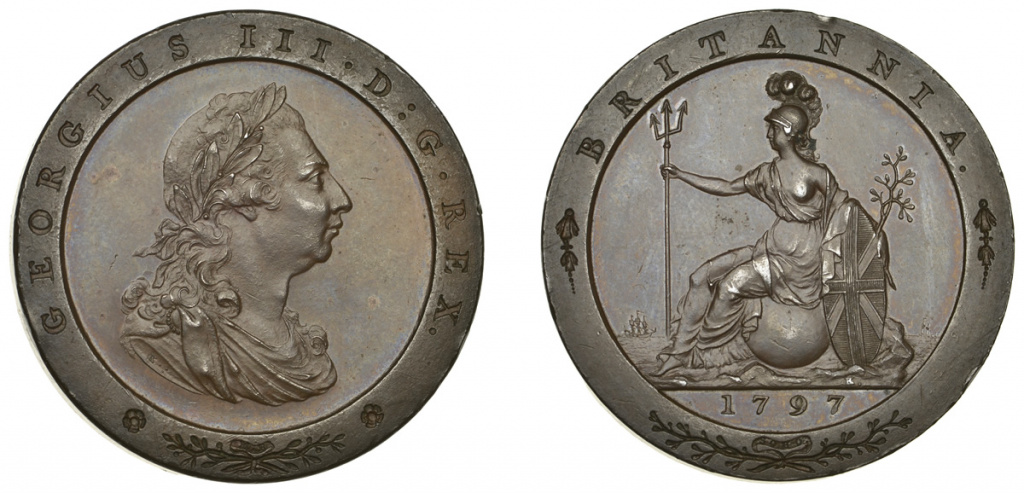
The design was also remarkable as being the first time that Britannia was shown ruling the waves; she had previously appeared on farthing and halfpenny.
Boulton wanted to prevent forgeries and so included design features such as the raised rim and incuse lettering. They were made to exact weights; two ounces for the twopenny and one ounce for the penny. Not only did this mean that their intrinsic value corresponded as nearly as possible to their face value it also meant that they could be used as reliable weights.
The size of each denomination was a fraction of a foot; twopenny was 15 to two foot and the penny was 17 to two foot. I have seen it suggested that this was to allow them to be checked for size. Maybe, but you would need a number of “good” coins and a reliable two foot measure. I wonder if it was just an outcome of the manufacturing process where one part of it happened to be two foot wide (or a multiple of it).
All these features were intended to make counterfeiting difficult. However, the new coins were being copied within a month of their issue.
The size, weight and design of the coins made them unpopular and they were nicknamed “cartwheel”. However, as Watt said in his eulogy to Boulton, after his death in 1809, “In short, had Mr. Boulton done nothing more in the world than he has accomplished in improving the coinage, his name would deserve to be immortalised“

